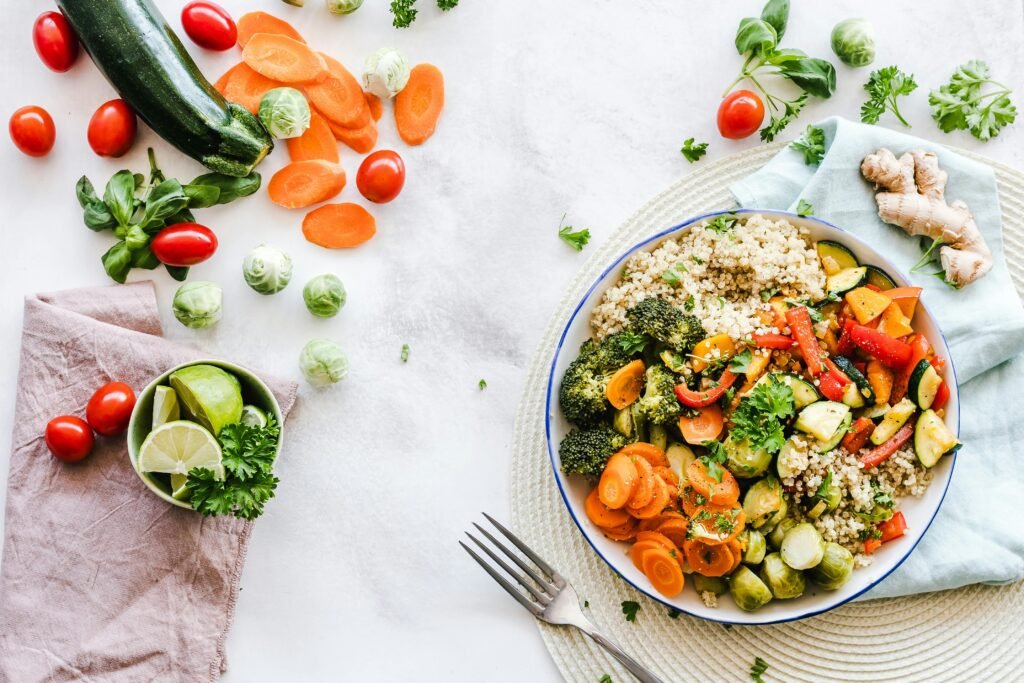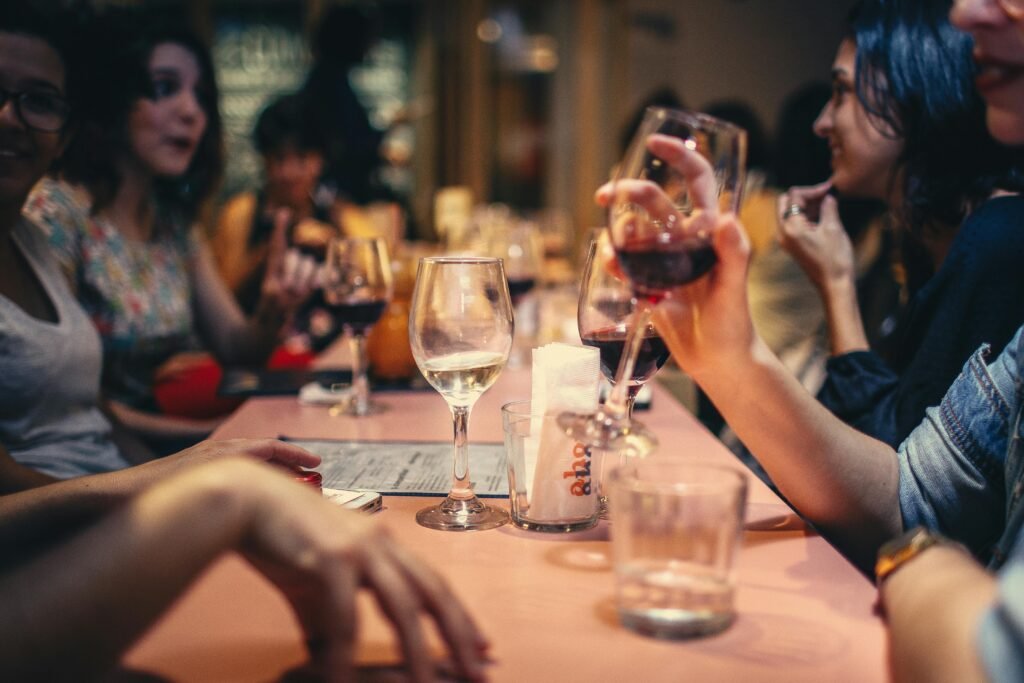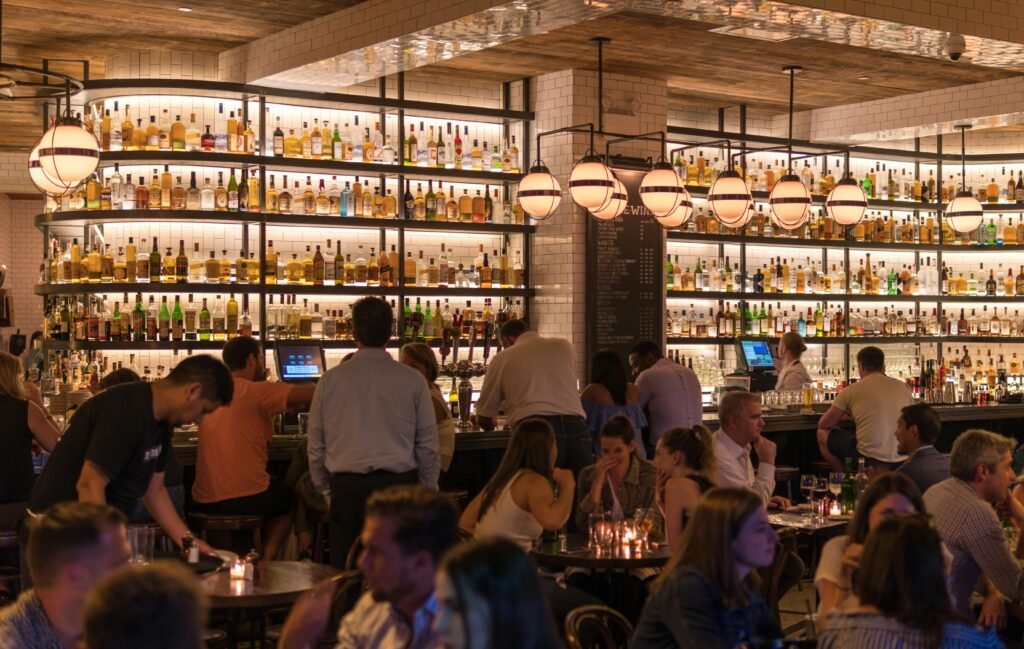Introduction to Cultural Immersion and Health
Cultural immersion is a vital aspect of travel that enables individuals to gain deeper insights into traditions, practices, and the daily lives of people in diverse regions. Engaging with local customs and sampling indigenous foods enrich not just the travel experience but also fosters cross-cultural understanding. However, while these encounters can be invigorating and enlightening, they may pose certain health risks that travelers should be mindful of. Attempting new foods, for instance, can lead to unexpected digestive issues or allergic reactions, particularly when these foods differ significantly from one’s usual diet. Adopting local customs can also involve physical activities that may be unfamiliar, leading to potential strain or injury.

The importance of balancing health considerations with the desire to enjoy new cultural experiences cannot be overstated. While immersing oneself in a new culture can help broaden perspectives and enhance personal growth, it is essential to remain vigilant and proactive about one’s health and well-being. This may involve researching local dietary practices before consumption or understanding specific health risks associated with certain activities. By taking preventive measures, travelers can savor the essence of local experiences while minimizing potential health concerns.
As we explore various tips and strategies for safely navigating cultural immersion, it is crucial to prioritize health without diminishing the joy of discovery. Engaging with a new culture doesn’t have to come at the expense of one’s well-being. In fact, with careful planning and a thoughtful approach, cultural immersion can be both safe and deeply rewarding.
Prioritize Food Safety
When traveling, experiencing local cuisine is an essential part of immersing oneself in a different culture. However, understanding food safety is crucial to ensure that these culinary adventures do not lead to foodborne illnesses. By prioritizing food safety, travelers can enjoy local dishes while minimizing health risks.
One of the first steps to ensuring food safety is to familiarize oneself with local food preparation practices and customs. Different cultures have varying standards and methods for cooking and serving food, which may not always align with what is considered safe in your home country. For instance, some foods may be served raw or undercooked, while others may be held at room temperature for extended periods. Being educated about these practices can help travelers make informed decisions about what to eat.
Recognizing safe food sources is another critical aspect of maintaining food safety while traveling. Street food, for example, can be a highlight of any trip, but it is essential to assess the cleanliness of the vendor and the preparation area. Look for stalls that are busy and have a high turnover of food, as this indicates freshness. Additionally, observing how food is handled can provide insights into its safety. Vendors who wear gloves, maintain cleanliness, and cook food to order may indicate a higher level of food safety.
When indulging in street food or unfamiliar local dishes, consider certain tips to enhance food safety. Drinking bottled water is advisable in many regions where tap water may pose health risks. Moreover, opting for freshly cooked meals over pre-prepared foods can significantly reduce the likelihood of foodborne illnesses. Washing fruits and vegetables with clean water or consuming those that have peels is also recommended. Overall, being well-informed about food safety practices while traveling will allow you to savor the array of flavors that local culture has to offer without compromising your health.
Understanding Local Hygiene Standards
When traveling internationally, one of the key considerations should be the varying hygiene standards that exist around the world. Different cultures have distinct practices and norms regarding cleanliness, particularly in food handling and preparation. Understanding these local hygiene standards is crucial for maintaining personal health while enjoying diverse culinary experiences.

In many regions, especially where street food is prevalent, the methods of food preparation can differ significantly from what visitors might be accustomed to. In some countries, fresh ingredients are heavily favored, but the practices employed in washing and preparing these ingredients may not align with travelers’ expectations. Observing local cleanliness practices can provide critical insights into the suitability of food options. For instance, does the vendor use gloves? Is there a visible source of clean water? These observations can help gauge the overall hygiene of establishments.
Furthermore, one must learn to distinguish between cultural norms and actual hygiene concerns. In some cultures, it is common to eat with hands, which may appear unclean to outsiders but might be an integral part of the dining experience. It is beneficial to remain open-minded while also being cautious. To assess hygiene standards effectively, consider various factors such as the establishment’s location, the presence of customers, and local health regulations.
One viable approach to make informed decisions is to seek recommendations from fellow travelers or local residents regarding safe dining options. Online reviews can also provide valuable insights into the cleanliness practices of specific restaurants or food vendors. By prioritizing these considerations and observing local hygiene standards, travelers can enjoy authentic experiences while minimizing health risks associated with unfamiliar food practices.
Embracing Healthy Local Cuisine
Exploring local cuisine is a vibrant aspect of immersing oneself in new cultures. However, it is essential to balance this experience with health-conscious choices. Many traditional dishes boast numerous health benefits and can be enjoyed in a manner that aligns with a nutritious lifestyle. A key strategy is to prioritize meals that incorporate ample vegetables, lean proteins, and whole grains, which form the foundation of a balanced diet.

When sampling regional specialties, look for options that highlight fresh, seasonal ingredients. For example, Mediterranean diets are renowned for their use of vegetables, olive oil, and lean proteins such as fish or chicken. Dishes like grilled vegetable skewers or quinoa-based salads serve as delicious introductions to local flavors while maintaining nutritional value. Similarly, Asia offers an abundance of healthy options, such as pho, which includes broth, herbs, and proteins, embodying a complete meal rich in nutrients.
It can be beneficial to seek out healthier adaptations of popular dishes as well. Many local eateries may offer contemporary twists on traditional recipes that cater to health-conscious consumers. For example, instead of fried food, opt for grilled or baked versions of local delicacies to reduce calorie intake without compromising taste. Additionally, consider substituting white rice with brown rice or whole grains to boost fiber content in your meals.
Furthermore, engaging with locals can provide insight into the healthiest options available. Conversations with residents often reveal their dining preferences, highlighting nutritious meals they enjoy. By asking for recommendations, one can discover authentic dining experiences that also prioritize better eating habits. Adopting such approaches can enhance your cultural journey while fostering a commitment to maintaining a healthy diet amidst local culinary discoveries.
Staying Hydrated Safely
Hydration plays a fundamental role in maintaining health, particularly when traveling to different regions and immersing oneself in local cultures. The need for safe and clean drinking water cannot be overstated, as it directly impacts one’s well-being and overall travel experience. Understanding where and how to access reliable sources of hydration is essential for travelers seeking to balance health with cultural immersion.
In many destinations, tap water may not be safe for consumption due to varying standards of water treatment. Thus, it becomes imperative for travelers to seek alternative options. Bottled water is a widely recommended choice, as it is typically produced under stringent safety regulations. However, selecting reputable brands that adhere to quality standards is crucial to avoid the consumption of contaminated products. Travelers are advised to check for seals on packaging and avoid purchasing bottles from street vendors, where the risk of contamination might be higher.
Another effective hydration method is water purification. Portable water filters and purification tablets can serve as vital tools for travelers in locations with questionable water quality. These products can significantly reduce the risk of waterborne diseases by eliminating harmful pathogens. Additionally, boiling water is a simple yet effective method to ensure safety, especially in areas where access to bottled water might be limited.
It is equally important to consider local customs surrounding drinking water. For example, in some cultures, tap water is seen as safe to drink, while in others, it is advised to avoid it altogether. Engaging with local residents can provide valuable insights into safe hydration practices. Understanding these nuances not only ensures better health outcomes but also enhances the cultural experience of traveling.
Exploring Safe Dining Options
When traveling, one of the most enriching experiences is indulging in local cuisine. However, ensuring that dining options are safe is paramount. The first step in selecting a safe dining option involves thorough research. Begin by utilizing trusted travel resources, which may include websites, food blogs, or social media platforms. Look for restaurants that specialize in local dishes and have a strong reputation in the community.

Reading customer reviews can also provide valuable insights into a restaurant’s hygiene practices and food quality. Focus on recent reviews from fellow travelers and locals, as they can often reveal whether a restaurant has maintained its standards. Additionally, platforms such as Google Maps or Yelp often include photos, which can help in assessing the cleanliness and ambiance of the establishment before even stepping inside.
It is wise to avoid dining in places that appear poorly maintained or have little foot traffic. A lack of patrons could indicate concerns about food safety or quality. Opting for restaurants during busy hours can often be a safety measure. High turnover tends to guarantee fresher ingredients, and a bustling environment may imply a certain level of trust among locals.
Additionally, cultural norms can vary, so understanding local dining customs can enhance safety. Engaging with staff and asking questions about dish preparation methods and ingredient sourcing can provide further assurance regarding food safety. Being informed about local health regulations and food safety standards adds an extra layer of security to your dining experience. By combining research, attentive observation, and cultural sensitivity, selecting safe dining options while immersing oneself in local experiences becomes an achievable goal.
Maintaining Personal Hygiene
Traveling offers a unique opportunity to immerse oneself in diverse cultures, but it also necessitates diligent attention to personal hygiene practices. One of the fundamental practices to prioritize during your journeys is handwashing. Regular handwashing, especially before meals and after using public facilities, significantly reduces the transmission of harmful bacteria and viruses. Therefore, it is advisable to familiarize yourself with proper handwashing techniques, which typically include using soap and water to scrub all surfaces of the hands for at least twenty seconds.
In situations where soap and water are unavailable, carrying hand sanitizer becomes essential. A hand sanitizer containing at least 60% alcohol can effectively eliminate germs when used correctly. Thus, it is prudent to keep a small, portable bottle of sanitizer in your bag for easy access whenever necessary. This practice proves particularly beneficial in crowded markets or public transport settings where exposure to pathogens may be heightened.
In addition to hand hygiene, utilizing disinfectant wipes can further enhance your personal hygiene routine. Disinfectant wipes are effective in cleaning surfaces that may harbor germs, such as dining tables, public seating, or even your traveling accommodation. By routinely wiping down these areas before use, you create an additional layer of protection against potential infections that could disrupt your travel experience.
Maintaining personal hygiene is crucial not only for your well-being but also for that of others you may encounter. By adopting these habits—frequent handwashing, carrying hand sanitizer, and utilizing disinfectant wipes—you can significantly diminish health risks while fully engaging in local cultural experiences. This diligent attention to hygiene will ensure that your travels remain enjoyable and health-conscious, allowing you to immerse yourself in the richness of the cultures you explore.
Connecting with Locals for Guidance
Engaging with local residents can significantly enhance your travel experience while ensuring you maintain healthy habits. To start, consider building relationships with residents by participating in community events. Markets, fairs, and cultural festivals are excellent opportunities to interact with locals, allowing you to learn about authentic eating practices and safe food options. These events often showcase regional cuisines and provide insight into local dietary habits, which can prove invaluable for maintaining health during your travels.

Additionally, leveraging social media platforms can facilitate connections with locals who share insights into their culture and food. Utilizing apps and websites dedicated to travel can help you find local guides or food enthusiasts who are willing to share their knowledge. Engaging with travelers on platforms like Instagram or Facebook groups that focus on specific locations can yield tips on where to find nutritious meals prepared following local customs. You can gather recommendations that are both safe and culturally enriching, offering a glimpse into the local gastronomic scene.
Moreover, seeking guidance from local food purveyors or restaurant owners can provide you with firsthand information about the sources of ingredients and their preparation methods. Often, these individuals are eager to share their culinary secrets and may even suggest local dishes that emphasize fresh and wholesome foods. By fostering these connections, you become more informed about the area’s dining scene, helping to ensure that your culinary choices are healthy and culturally respectful. Ultimately, building relationships with locals not only enriches your travel experience but also empowers you to make informed decisions about your health while immersing yourself in the culture.
Conclusion: Finding Balance in Cultural Immersion
In the pursuit of enriching travel experiences, it is essential to recognize that immersing oneself in local culture does not need to detract from personal health. Throughout this blog post, we have explored various strategies to achieve a harmonious balance between cultural engagement and health-conscious decisions. Embracing local culinary delights, customs, and traditions can be enjoyable, yet it is crucial to remain mindful of dietary choices and lifestyle habits.
One effective method to integrate health into cultural immersion is by selecting local dishes that incorporate fresh, seasonal ingredients. This approach not only enhances the gastronomic experience but also promotes well-being by ensuring a nutritious intake. Additionally, participating in traditional activities that involve physical movement, such as dance or local sports, serves as an excellent means to remain active while engaging with the culture. Such activities can transform a seemingly indulgent trip into a healthy adventure, fostering connection through shared experiences.
Moreover, being aware of personal health needs when traveling is imperative. This awareness allows individuals to make informed choices about food and activities, whether adhering to dietary restrictions or incorporating exercise into daily routines. By practicing moderation and mindfulness, travelers can savor local delights without compromising their health goals.
Ultimately, finding balance in cultural immersion is about embracing diversity while staying true to one’s well-being. Travelers are encouraged to approach their journeys with an open mind and a balanced mindset. By combining curiosity about local customs with commitment to personal health, individuals can create fulfilling experiences that resonate with both their cultural interests and health aspirations. This synergy enables a more rewarding travel experience, enriching both the body and spirit.
